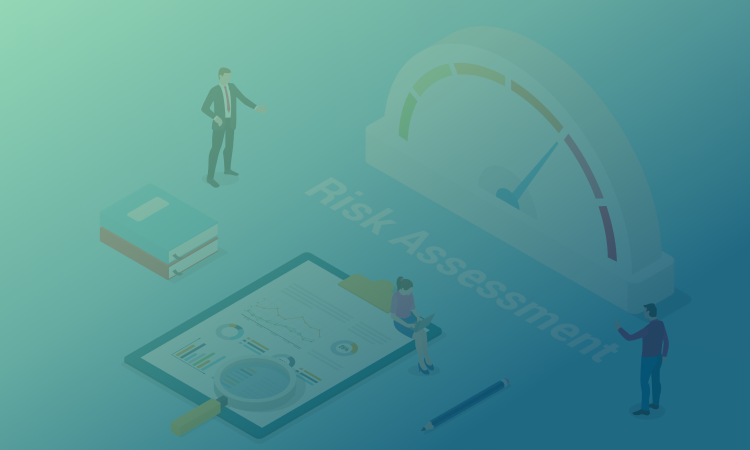Introduction: From GRC to IRM to AI-Powered Risk Strategy
Today’s business environment is more interconnected, data-intensive, and risk-exposed than ever before. Older Governance, Risk, and Compliance (GRC) models, which were adequate for static, checklist-style compliance, are no longer up to the task of addressing real-time digital environments. Meet Integrated Risk Management (IRM), a more unified and anticipatory model bringing together risk intelligence across people, processes, and technologies.
IRM is not only a process or a tool. It is a strategic capability that enables organizations to make informed, risk-conscious decisions. But even IRM platforms are nearing their breaking points as data amounts increase and threats become more sophisticated. The next step? Risk scoring powered by AI.
AI-based risk scoring uses Machine Learning (ML) to detect, score, and rank risks by internal and external inputs in real-time. This introduces velocity, precision, and relevance to enterprise risk assessments, transforming companies from reactive to genuinely predictive risk management.
What Is AI-Driven Risk Scoring?
AI-powered risk scoring means using sophisticated algorithms. Particularly, machine learning and natural language processing, to determine risk exposure from real-time, multi-dimensional data. Unlike traditional risk assessments that depend on static frameworks and periodic checks, AI-driven scoring continuously learns and adapts to emerging threats and business changes.
Key Components:
- Key Risk Indicators (KRIs): Timely warning signs associated with strategic initiatives.
- External Threat Intelligence: Inputs from cybersecurity databases, regulatory agencies, and open-source intelligence (OSINT).
- Behavioral & Transactional Data: User behavior, money transactions, log access, and vendor performance.
- Scoring Algorithms: Supervised and unsupervised ML algorithms evaluate impact, likelihood, velocity, and risk interdependencies
AI-based scoring provides context-specific insights and not blanket warnings. For instance, rise in supplier invoice anomalies in the face of a geopolitical crisis can be identified as a procurement-related fraud risk and not merely a financial deviation.
Why AI Is Becoming Central to IRM
The increasing role of AI in Integrated Risk Management (IRM) started from the vast volume and complexity of enterprise data. This now often exists outside traditional IT boundaries. This is compounded by rapidly evolving regulatory requirements, such as the EU’s Digital Operational Resilience Act and the U.S. SEC’s cybersecurity mandates, pushing companies to ensure continuous risk visibility and auditable controls.
Additionally, the nature of risk has shifted beyond operational disruptions to include reputational harm, ethical failures, and systemic exposures. AI-driven risk scoring can effectively address these challenges by monitoring insider threats, evaluating ESG risks, tracking supply chain disruptions, and identifying regulatory exposure through automated scans.
According to the World Economic Forum’s Global Risks Report 2024, more than 70% of business executives consider “interconnected risk events” a major strategic issue. This highlights the need for AI-powered IRM solutions.
How AI-Driven Risk Scoring Works
- Data Ingestion: There is data ingestion from several structured and unstructured sources, such as cybersecurity logs, ERP platforms, regulatory feeds, IoT sensors, and even social media.
- Feature Engineering: AI models derive meaningful features like frequency of suspicious access attempts, variations in supplier activity, or changes in payment patterns.
- Model Training and Deployment: Models are trained on labeled past data (supervised learning) or utilized to identify outliers (unsupervised learning). For instance, a supervised model could forecast compliance violations based on previous offenses, while an unsupervised model identifies new patterns as threats.
- Real-Time Risk Scoring: Likelihood and potential business impact are used to calculate scores for entities, users, vendors, and assets, which are continually updated as new data arrives.
- Decision Outputs: The outputs are fed into dashboards with – Risk heat maps, Prioritized alert queues, and Automated playbooks/workflows for remediation.
Platforms like Microsoft Azure AI and Google Cloud’s Vertex AI integrate explainable AI (XAI) to ensure transparency, especially important in regulated industries like banking, healthcare, and energy.
Key Benefits for Organizations
- Speed: AI allows for instant discovery of emerging risks, critical for zero-day threats or rapidly unfolding supply disruptions.
- Accuracy: Context-sensitive scoring significantly eliminates false positives, allowing analysts to concentrate on actual problems.
- Efficiency: Automates manual risk assessments, control testing, and compliance verification.
- Scalability: Spans business functions, cybersecurity, procurement, finance, and HR to ensure a common language of risk.
- Strategic Alignment: Connects risk scoring to business KPIs to allow boards and CROs to measure how risks affect revenue, reputation, and continuity.
In Deloitte’s “AI in Third-Party Risk” study, firms using automated risk analytics reported 30–40% faster incident response times and up to 20% fewer audit exceptions.
Future Outlook: AI as a Core IRM Pillar
The evolution of IRM will shift from centralized control centers to distributed, AI-powered “RiskOps” models. These systems will automate risk detection, scoring, and response, reducing dependency on manual oversight.
Key Trends:
- Contextual AI Engines: It is the Capability of understanding organizational nuances and external signals to tailor scoring models.
- Continuous Control Monitoring (CCM): AI will run 24/7 audits across IT, compliance, and procurement controls.
- Risk Quantification: AI models can simulate financial exposure from cyber incidents, ESG failures, and supply chain shocks, informing insurance premiums and strategic pivots.
- AI-Augmented Boards: Board-level dashboards will be powered by AI insights, enabling real-time governance, scenario analysis, and enterprise-wide resilience.
Conclusion
AI-powered risk scoring is not a future trend anymore; it is a strategic necessity. With organizations struggling with speeding risks, intensifying regulatory scrutiny, and operating uncertainty, embracing smart, responsive IRM models is no longer an option. For maximum value to be realized, organizations need to spend on responsible AI governance, cross-functional collaboration (CIO, CRO, CISO, compliance heads), high-quality data pipes, and talent development in both risk management and machine learning.
The question is not if AI will reframe risk, but whether your organization will be a leader or follower in such a transformation. Is your IRM strategy AI-ready for 2025 and beyond.

